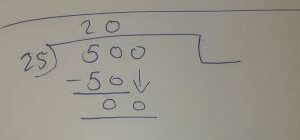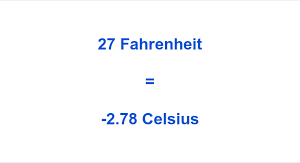Welcome factors of 280 to the intriguing world of numbers, where patterns and possibilities intertwine. Today, we’re diving deep into the enigmatic realm of 280 – a number that holds more significance than meets the eye. From its historical roots to its mathematical marvels, from real-life applications to cultural resonance – get ready for an exhilarating exploration! So fasten your seatbelts as we unravel the mysteries and illuminate the factors of 280 that may just surprise you. Prepare for a fascinating journey into numerical wonderland!
Historical significance of the number 280
Throughout history, numbers have held significant meanings and symbolized various aspects of human existence. The number 280 is no exception to this rule. In fact, it has its own intriguing historical significance that spans across different cultures.
In ancient Greece, the number 280 was associated with the Olympic Games. These games were held every four years and lasted for a total of 280 days – an entire year in the Greek calendar. It represented a period of time dedicated to celebrating athletic prowess and honoring the gods.
Moving forward in time, we find that the Roman Empire also attached importance to the number 280. For them, it denoted military strength and victory on the battlefield. This connection can be traced back to Emperor Diocletian’s reforms, where he divided Rome into four parts known as tetrarchies – each ruled by a separate emperor who commanded an army of 70,000 men. When combined together, these armies totaled exactly 280 thousand soldiers.
Furthermore, in Chinese culture, the number 280 is associated with success and abundance due to its pronunciation sounding similar to “easy profit” or “prosperous.” This belief has led many individuals in China to consider this number lucky when it comes to financial matters or business ventures.
As we delve into history’s archives, we discover that numbers hold deep cultural meaning and significance beyond their numerical value alone. The historical connections surrounding the number 280 demonstrate how our ancestors assigned symbolic importance based on their experiences and beliefs at that time.
Mathematics behind the number 280
The number 280 may seem like just another digit, but when we delve into its mathematical properties, we discover a fascinating world of patterns and relationships. In the realm of mathematics, every number has its own unique characteristics that make it worthy of exploration.
When it comes to the mathematics behind 280, one notable aspect is its divisibility. Divisibility refers to how evenly a number can be divided by other numbers without leaving a remainder. In the case of 280, it is divisible by several small prime numbers such as 2, 5, and 7. This means that when you divide 280 by any of these numbers, you get an integer result with no decimal places.
Furthermore, the prime factorization of 280 reveals even more interesting insights about this number’s mathematical nature. It can be expressed as (2^3) x (5 x 7), which represents its composition in terms of prime factors raised to specific powers.
Exploring the properties and patterns within numbers like 280 not only deepens our understanding of mathematics but also has practical applications in various fields such as cryptography and computer science.
Understanding the intricacies behind numbers like 280 allows us to unlock new possibilities in problem-solving and computation. Whether we are analyzing data sets or designing algorithms for complex systems, an awareness of these numerical properties can have real-world implications.
In addition to its mathematical significance,
the number
“280”
has cultural importance as well.
Real-life applications of 280
Real-life applications of the number 280 can be found in various areas, showcasing its significance beyond just being a mathematical value. One area where we encounter the impact of 280 is in time management and productivity.
In terms of time, if you break down 280 into minutes, it equals to approximately 4 hours and 40 minutes. This chunk of time can be utilized effectively for tasks that require focused attention or completion within a specific timeframe. Whether it’s studying for an exam, working on a project, or even engaging in physical exercise, knowing that you have around 280 minutes at your disposal can help you plan and allocate your time more efficiently.
Another real-life application of the number 280 lies in transportation and logistics. For example, many airlines use Boeing’s powerful twin-engine jet aircraft called the Boeing B-787-9 Dreamliner with a maximum seating capacity of around 280 passengers. Understanding this figure allows airlines to manage their flight schedules and optimize passenger loads accordingly.
The concept of “optimal load” extends beyond aviation as well. In industries such as manufacturing or shipping, optimizing product packaging based on factors like weight restrictions or container capacities helps maximize efficiency and reduce costs by ensuring that each box or container carries an optimal quantity – often around the range of about 280 units depending on the product dimensions.
Even in sports, we find instances where understanding multiples or fractions related to the number 280 can provide valuable insights. For instance, consider baseball – one sport heavily reliant on statistics: A player who consistently maintains a batting average above .300 (or roughly .285) is considered exceptional because they successfully hit safely more than two out of every seven at-bats – which translates to approximately hitting safely once every three plate appearances!
These are just some examples highlighting how numbers like 280 have practical implications in our day-to-day lives across various fields—from managing our own time effectively to optimizing resources for better outcomes. It’s fascinating to explore the ways in which numbers play a role beyond their mathematical value
Factors of 280 and their significance
Factors of 280 and their significance
When it comes to numbers, there’s always more than meets the eye. Take the number 280, for example. It may seem like just another number, but once we start exploring its factors, we uncover a whole world of significance.
The factors of 280 are the numbers that can be divided evenly into it without leaving a remainder. In this case, the factors of 280 are 1, 2, 4, 5, 7,8 ,10 ,14 ,20 ,28 ,35 ,40 ,56 ,70 ,140 and finally 280 itself.
Why is this important? Well, understanding the factors of a number helps us in many practical ways. For instance, if you’re trying to find all possible combinations or divisors of a certain quantity or value represented by the number in question – such as arranging items on shelves or planning out seating arrangements – knowing its factors can make your task much easier.
Moreover,the significance goes beyond mere calculations. The factors provide insights into patterns and relationships within mathematics – they unlock secrets hidden deep within numerical puzzles and equations.
So next time you come across the number 280 in your daily life (which might happen more often than you think!), take a moment to appreciate its rich tapestry of factors and their fascinating implications. You never know when this knowledge might come in handy!
The cultural impact of the number 280
The cultural impact of the number 280 cannot be underestimated. People have long been fascinated by numbers and their meaning, and 280 is no exception. In various cultures throughout history, certain numbers have held special significance, often associated with luck or spirituality. While not as widely recognized as some other numbers, such as 7 or 13, 280 still carries its own unique cultural weight.
In ancient Chinese culture, for example, the number eight is considered lucky because it sounds similar to the word for wealth in Mandarin. Given that there are two eights in the number 280, one could argue that it holds a double dose of good fortune! Additionally, some numerology enthusiasts believe that each individual number has its own vibration and energy. In this system of belief, those who resonate with the vibrations of the number two and eight may find themselves drawn to aspects of generosity and achievement.
Moreover, in popular culture today we can observe references to significant numerical patterns everywhere – from movie releases on specific dates (think “May the fourth be with you” on Star Wars day) to athletes wearing jersey numbers associated with personal achievements or iconic players before them.
Overall,, while it may not hold universal recognition like more commonly revered digits do; The cultural impact of any given number is subjective but undeniable nonetheless — whether through historical associations or contemporary symbolism — these numerical connections shape our perception and understanding in ways both subtle and profound. So next time you come across the number 280 popping up in your life – take notice! You might just discover a hidden connection or meaningful coincidence worth exploring further.
Conclusion: Why we should pay attention to factors of 280 in our daily lives
In our daily lives, we often overlook the significance of numbers and their factors. However, paying attention to these mathematical elements can actually provide us with valuable insights and understanding.
When it comes to the number 280, its factors hold particular importance. By delving into its historical significance, exploring the mathematics behind it, and uncovering real-life applications, we begin to see how this number impacts various aspects of our world.
The factors of 280 reveal patterns and relationships that can help us solve problems in diverse fields like finance, science, technology, and even art. Understanding these factors allows us to make informed decisions based on data analysis and critical thinking.
Moreover, recognizing the cultural impact of certain numbers enables us to appreciate their presence in literature, music, architecture – essentially every aspect of human creativity. The number 280 may not be as well-known as others like pi or Fibonacci sequence but acknowledging its influence opens doors to new perspectives.
So next time you encounter the number 280 or any other seemingly ordinary figure in your day-to-day life or work environment – take a moment to consider its factors. Reflect on how they contribute to a better understanding of the world around you.
By paying attention to the factors of 280 in our daily lives, we tap into a deeper level of knowledge that empowers us intellectually and creatively. Let’s embrace these numerical wonders as gateways for exploration rather than mere digits on a page!
Remember: Numbers are not just abstract concepts; they have stories waiting for those who dare seek them out!










